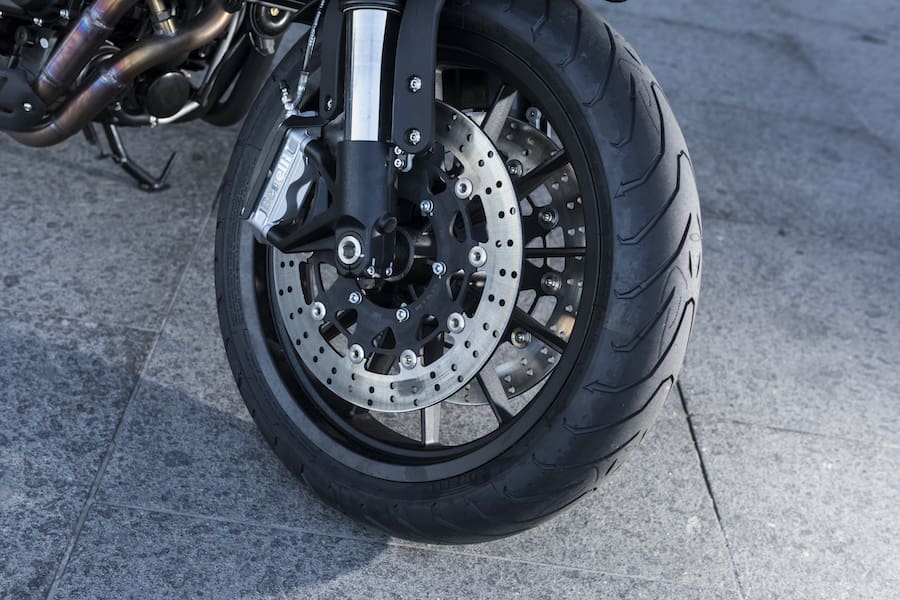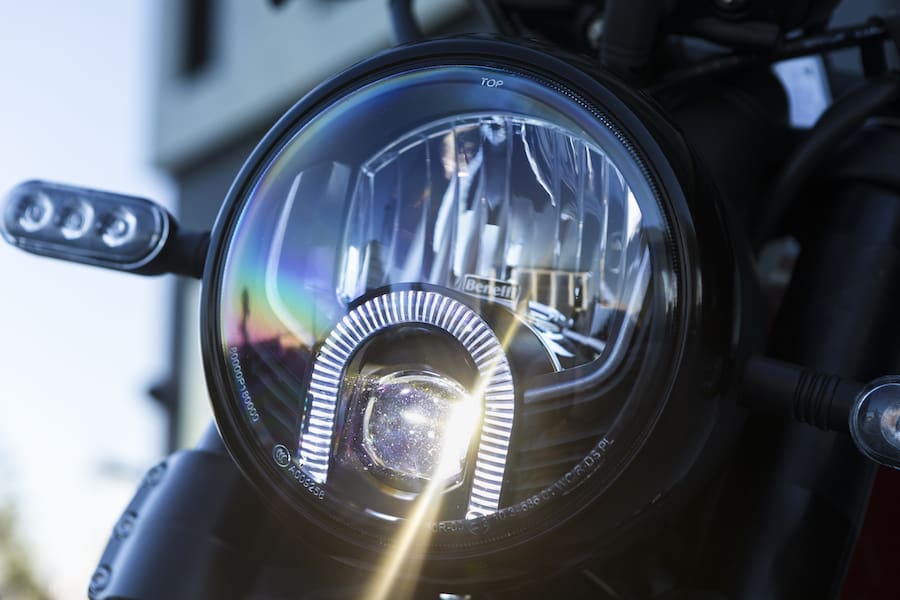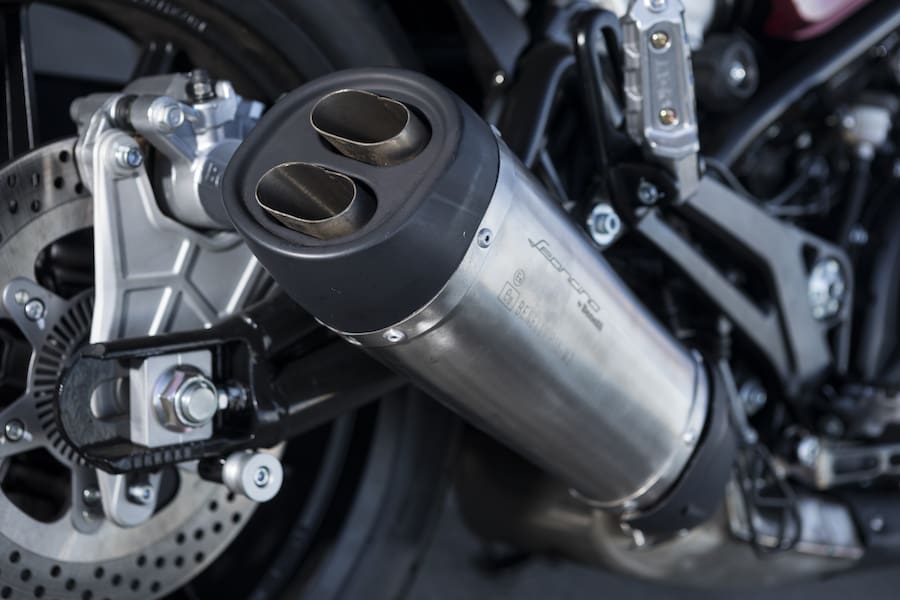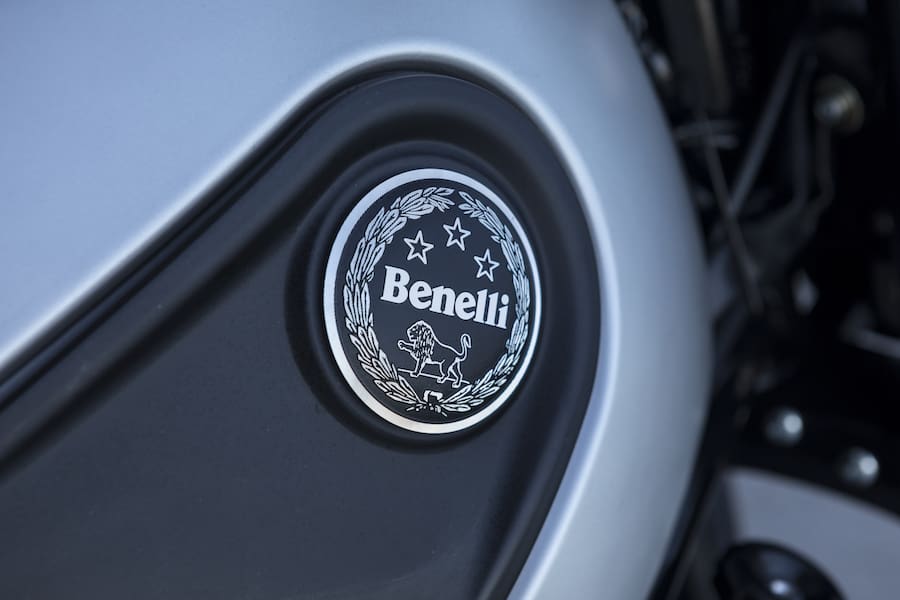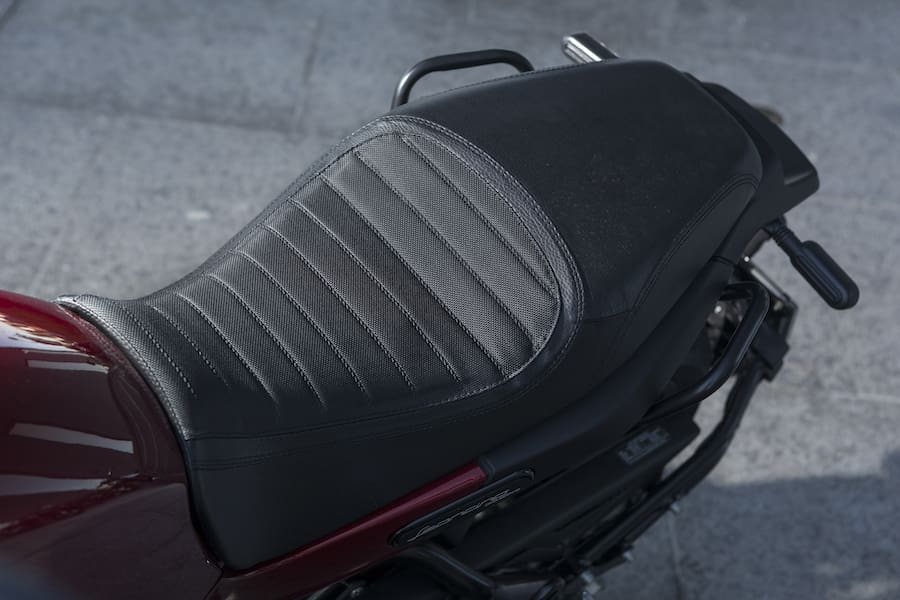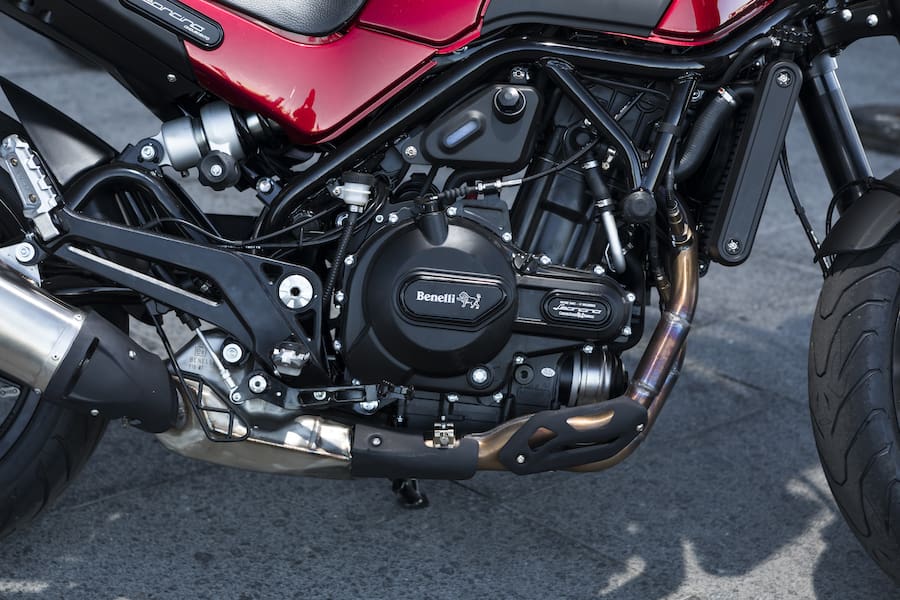The LAMS segment is a popular and lucrative one for motorcycle manufacturers and, with so many capable and varied machines already available for the eager learner to ponder, it’s a brave brand that throws yet another on-trend offering into the growing pool of contenders hoping to lure learners.
Benelli is a company that has stood the test of time, but its staying power has not come by accident; a mix of persistence and passion has created the spirit that has maintained the company for 100 years.
The Italian company has battled through two world wars and many different ownership changes. It has faded at times but has always been able to resurface, and its latest resurgence seems to be the best chance yet for the brand.
And the Leoncino, which translates as ‘lion cub’, is the perfect example.
Leoncino is a name synonymous with the brand. It is a moniker first given to a Benelli-branded machine back in the 1950s, and it holds the mantle of being the first Benelli sold into the US market, as well as Europe.
A lot was riding on the shoulders of the Leoncino back then, and one can’t help but think that it’s the same story this time around.
Benelli beat all its rivals to the efficient off-shore manufacturing punch by almost a decade. At the time, everyone frowned on the heritage Italian brand’s Chinese takeover in 2005, which eventually saw R&D remain in Europe but its manufacturing facility moved to the more efficient and cost-effective China. Now, it’s hard to find a brand that doesn’t have an Asian production facility.
A swathe of new models ensued. Not necessarily ones that fans of the old and storied marque expected, but well thought-out machines that answered questions a rapidly changing marketplace was asking; inexpensive mid-capacity machines with European looks and, what time has proven, reliability.
By 2016, a deal was brokered with the industry giant Geely Automotive Group (see sidebar), which acquired a majority shareholding in the company and provided the deep pockets Benelli needed to execute its future model plans.
With the extra investment, a bevvy of new concepts and production models began appearing, the most recent of these being the 500cc Leoncino.
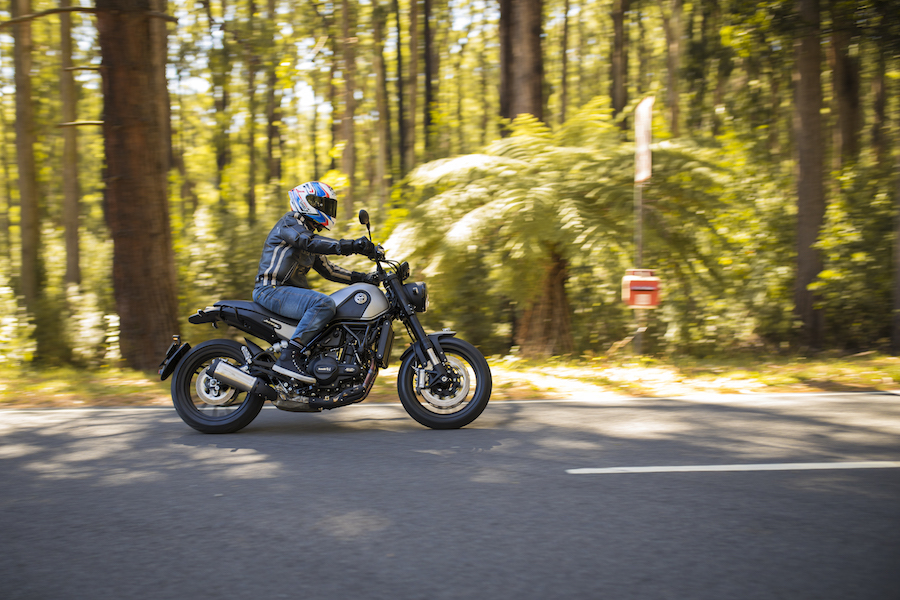
It might seem the Italian-based marque is the latest to jump on the lucrative retro bandwagon with any machine that will fit the bill, but the Leoncino has been planned and executed with great detail and is one of the key models on which the company is pinning its future success.
At a time when many manufacturers are making modern replicas or tributes to original models, Benelli opted for a different direction. The café style is miles away from the original Leoncino model, and I’d go so far as to say it has an almost futuristic look to its otherwise retro looks.
It’s powered by a fuel-injected 500cc parallel-twin engine that shares the same bottom-end as the brand’s BN302. Sound familiar? That’s because it shares the same engine platform as Benelli’s TRK502 adventure bike (AMCN Vol 67 No 20).
It’s a modern design with double overhead cams and four valves per cylinder, making 35kW and producing 45Nm of torque. It’s a wet sump motor that uses a balance shaft to keep the vibration down, but when you are on board and give it a rev, you know it’s alive.
Matched to this is a six-speed gearbox with nice wide ratios, making it very easy to take off from the lights with a low first gear, yet it has an almost overdrive top gear. It’s got a certain vibration that reminds me of a big-bore Boxer twin, and I think it sounds and feels great.
The frame is a tubular steel trellis affair that offers excellent feedback, paired with a significant 50mm upside-down front fork that offers 125mm of travel, and is adjustable for rebound. The standard settings felt right so I didn’t bother to change them, but it’s nice to know you can play if you want to.
The brakes are pretty serious, with twin 320mm front discs being clamped by two four-piston radial calipers with the Benelli trademark inscribed on them. The rear is a single 260mm disc with a single-piston caliper and works well.
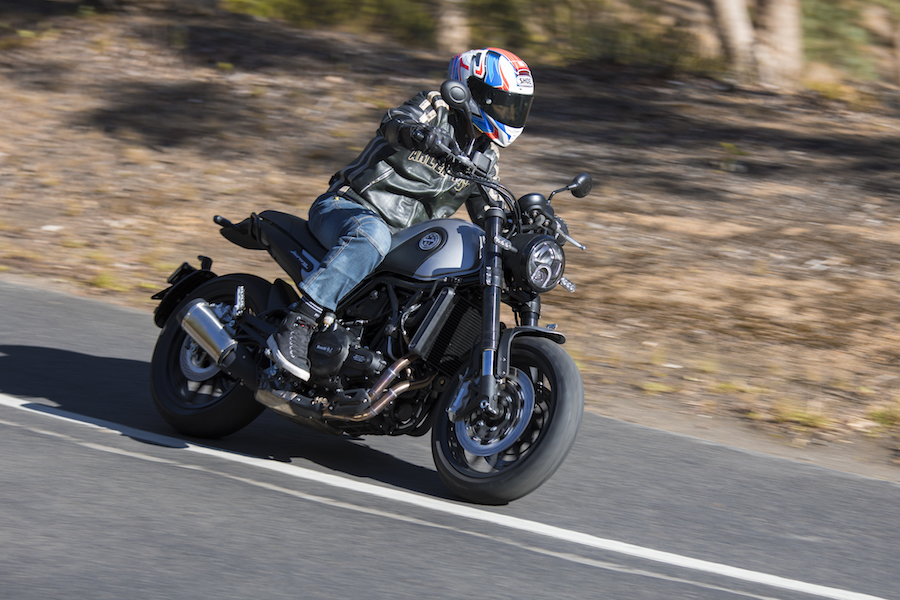
It’s ABS enabled and there is a button on the bar that allows the rider to disengage the ABS if the need should ever arise. Why you would want to, I’m not sure, but you have the option.
The rear shock is plush and has a nifty hydraulic preload adjuster built in, making adjusting it a breeze. There’s 112mm of travel at the back, and on the road, it soaked up everything that was thrown at it.
Meeting Euro 4 compliance is important for the future, and the Leoncino has the tick of approval. A myriad of modern engine sensors work together with the Bosch MSE 6.0 engine control unit to send the cleanest gasses possible through to the catalytic converter built into the exhaust pipe.
The pipe itself has a nice-looking twin-exit tube system built into the single muffler, and it really is one of the best original-looking pipes on the market. So, good job there.
The multi-function dash, although simple, is packed with a ton of important information. There’s obviously the usual fare, such as a tacho, digital speedo and gear-position sensor, but it also has other important items including a clock, fuel gauge, trip meters and an ambient temperature gauge. The downside is you must hit a button on the instrument panel to change it, a switchblock button would have been nicer.
The switchblocks are really high-quality and easy to use, with not many buttons to play with, which is good news. It’s easy to find the indicator switch, headlight and so on and, in my book, simple is better.
The Leoncino is fitted with Pirelli Angel tyres, which are known for their quality and durability.
It’s a good match because both Benelli and Pirelli have Italian history.

The dry weight is claimed to be 186kg. It certainly feels light enough, and is well balanced so that even when chugging along in first gear, you feel almost no weight at all.
The Leoncino is a very sensible bike, with an upright seating position and average seat height making it easy to manoeuvre.
The wide ’bars give extra purchase and balancing ability, especially if you find yourself in a tricky situation at parking time. There’s also a couple of solid grab rails towards the back of the bike you can use as an extra steady.
The steering lock is perhaps a little narrow and I felt that it got to the stop pretty easy when parking, but once underway it was fine.
Throwing the leg over is also an easy affair due to the clean lines at the back of the bike where the pillion would sit. There’s nothing to get yourself caught up on, so for learners, this sometimes harrowing moment is a no-fuss affair on the Leoncino.
The suspension is plush when you board the bike too, and once on it the balance is great – not top-heavy at all. The plushness even while standing still lets the rider change footing from left to right, or right to left, with the rear shock moving a bit.
That movement helps to give confidence when standing still and removes the sometimes worrying feeling of dropping the bike when at a standstill.
Placing your hands on the bars feels very natural; they’re at just the right height, they are wider than usual, but the stance seemed to once again fit in with the café racer theme, and the clutch and brake are right at your fingertips.
The clutch is very light and has a very good feel to the engine. It makes taking off simple, and it feels almost impossible to stall. I even took off without giving any throttle input and away it went; very confidence-inspiring.
Once rolling it shifts through the gearbox very positively, letting you turn your full attention to the road rather than worrying about finding gears. In the traffic, it was sensational, especially with its excellent ability to be able to stop and start at a whim, and its upright seating position offers plenty of vision.
It cruises out on the freeway well, sitting comfortably on 100km/h at 5500rpm, while the suspension absorbs well at that speed, and the seat’s pretty comfortable for freeway distances.
The seat has a firm feel, but by the end of the day I wasn’t sore or moving around like I find myself doing on some machines.
The instruments are pretty easy to read and, even though there is no screen to keep the wind off, I think at the speed limit it actually adds to the enjoyment.
You feel alive when riding this bike.
TEST Steve Martin
PHOTOGRAPHY Ben Galli

